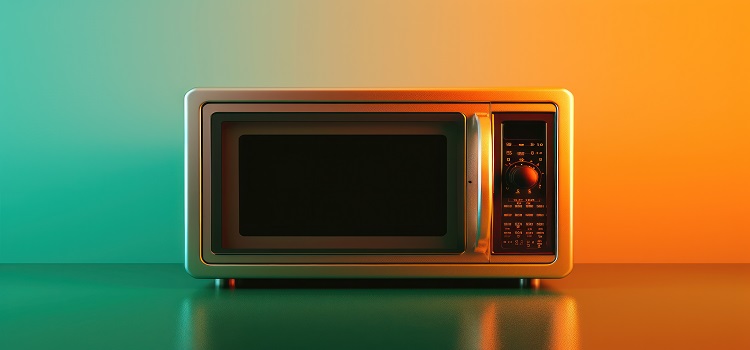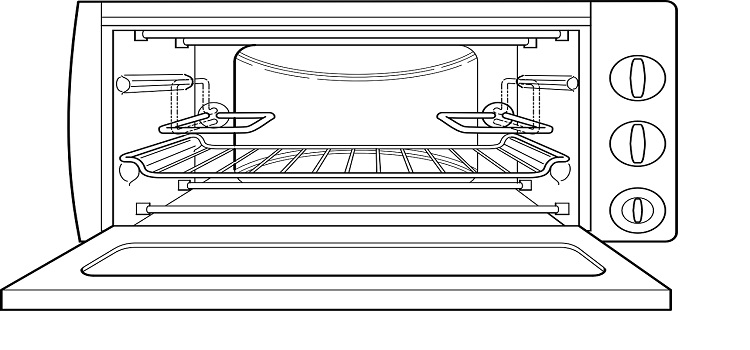As an Amazon Associate I earn from qualifying purchases.
Unveiling the Intricacies of Microwave Oven Schematics: A Comprehensive Exploration
Introduction: Embarking on a journey through microwave oven schematics unveils a fascinating world of intricate design, advanced circuitry, and efficient functionality. In this detailed exploration, we will unravel the internal structure, modeling, and circuitry that constitute the backbone of a microwave oven, shedding light on how this indispensable kitchen appliance operates.

I. Internal Structure of a Microwave Oven:
- Cavity and Door Assembly:
- The microwave oven’s cavity houses the cooking chamber, while the door assembly contains the protective mesh and safety interlocks.
- Within the Microwave oven Schematic, the cavity’s reflective surfaces are strategically positioned to aid in distributing microwaves evenly for cooking.
- Magnetron:
- Positioned at the heart of the microwave, the magnetron generates microwaves by converting electrical energy into radiofrequency radiation.
- Waveguide System:
- The waveguide directs microwaves from the magnetron to the cooking chamber, ensuring an efficient distribution of energy.
- Turntable and Stirrer:
- The turntable rotates to guarantee uniform heating, while the stirrer (in some models) disperses microwaves evenly for consistent cooking results.
- Control Panel and User Interface:
- The control panel houses the user interface, featuring buttons, a digital display, and sensors for programming and monitoring cooking parameters.

II. Modeling and Design Considerations:
- Efficient Heating Patterns:
- Microwave oven schematics incorporate a design that creates optimal heating patterns, minimizing cold spots and ensuring thorough cooking.
- Safety Features:
- Advanced models integrate safety features such as door interlocks, preventing operation when the door is open, and thermal sensors to avoid overheating.
- Energy Efficiency:
- Within the Microwave oven Schematic, modern designs focus on energy efficiency, optimizing the conversion of electrical energy to microwaves for effective cooking while minimizing power consumption.
- Material Selection:
- Schematics consider materials with low microwave absorption rates for construction, preventing unnecessary energy loss and ensuring optimal performance.

III. How a Microwave Oven Works:
- Microwave Generation:
- The process begins with the magnetron converting electrical energy into microwaves, typically in the 2.4 GHz frequency range.
- Microwave Distribution:
- The waveguide system directs microwaves into the cooking chamber, where they bounce off reflective surfaces, ensuring even distribution.
- Absorption and Heating:
- Water molecules in the food absorb the microwave energy, leading to rapid molecular movement and generating heat throughout the item.
- Controlled Operation:
- The user interface on the control panel allows users to set cooking parameters, adjusting power levels and cooking times for precise control.
IV. Microwave Oven Circuitry:
- Power Supply:
- The Microwave oven Schematic includes a power supply circuit, converting household AC power to the DC power required for the magnetron.
- Magnetron Control:
- A circuit regulates the magnetron’s operation, ensuring precise control over microwave generation.
- Safety Circuits:
- Multiple safety circuits, including thermal sensors and door interlocks, contribute to safe and secure microwave operation.
- User Interface Circuitry:
- Circuitry for the control panel and user interface enables the input and processing of user-defined cooking parameters.

V. Microwave Oven Schematic Diagram:
| Component | Description |
| Magnetron | Generates microwaves by converting electrical energy. |
| Waveguide System | Directs microwaves from the magnetron to the cooking chamber. |
| Turntable | Rotates to ensure uniform heating. |
| Control Panel | Houses user interface for programming and monitoring. |
VI. Maintenance and Troubleshooting:
- Cleaning Guidelines:
- Schematics emphasize the importance of keeping the cavity, waveguide, and turntable clean for optimal performance.
- Diagnostic Procedures:
- Troubleshooting steps are outlined in the Microwave oven Schematic, guiding users on how to diagnose and address common issues like uneven heating or malfunctioning controls.
- Safety Checks:
- Detailed safety checks are incorporated into the schematic to ensure users follow proper procedures when conducting maintenance or repairs.
Conclusion: The Microwave oven Schematic is a testament to precision engineering, combining advanced technology, safety features, and efficient design to create a kitchen appliance that has become a staple in households worldwide. Understanding the intricacies of the schematic provides users with valuable insights into the functioning, modeling, and design considerations that make microwave ovens indispensable tools in modern kitchens.
As an Amazon Associate I earn from qualifying purchases.
Leave a Reply